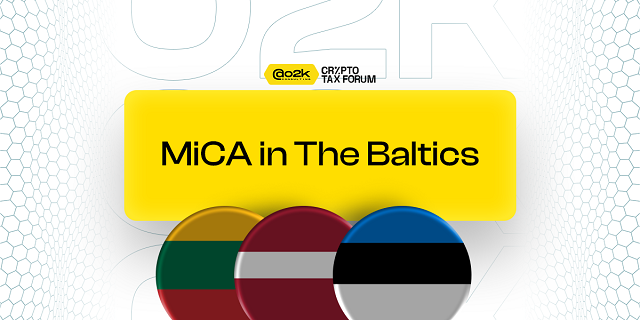Crypto Taxation in India: Where Do We Stand Now?

Did you know that India ranks among the top countries for crypto adoption, with millions of Indians investing in Bitcoin, Ethereum and countless altcoins every year?
Aside from larger cities like New Delhi and Mumbai, smaller cities are becoming “increasingly active” in crypto. According to a Chainalysis report, India topped the Global Crypto Adoption Index in 2023, but this rise in adoption has also caught the close attention of the Indian tax authorities.
Untilrecently, crypto investors in India operated in a regulatory grey zone. Manyinvestors assumed that crypto gains might slip under the radar of the Income Tax Department. However, the Union Budget 2022 putan end to that uncertainty by introducing a clear (and strict) tax regime for Virtual Digital Assets(VDAs), the term now used under Indian tax law to describe cryptocurrencies, NFTs andother digital tokens.
How is crypto taxed in India?
Under Section 115BBH of the Income Tax Act, any income from the transfer of a VDA is taxed at a flat rate of 30%. Unlike traditional capital gains tax, this applies irrespective of the holding period. So, whether you hold your Bitcoin for a week or a year makes no difference to the tax rate.
What’s more, India’s crypto tax regime is notably stringent in disallowing any deductions. According to the Central Board of Direct Taxes (CBDT), losses from one VDA cannot be offset against gains from another. Nor can you offset crypto losses against other income, such as salary or business income. This means that if you make a profit on your Bitcoin but a loss on your altcoins, you can’t balance the two out, you still pay 30% on the profit, full stop.
What about TDS on crypto transactions?
Another unique feature of India’s crypto tax system is the introduction of a 1% Tax Deducted at Source (TDS) on all crypto transfers above INR 10,000 in a financial year, as per Section 194S. This came into effect from 1stJuly 2022. The TDS is meant to create a transaction trail for the Income Tax Department to monitor crypto trades.
Crypto exchanges like CoinDCX, WazirX and ZebPay are responsible for deducting the TDS at the time of the transaction. Even peer-to-peer transactions are covered. If you trade crypto outside an exchange, the buyer must deduct TDS and deposit it with the government.
How are NFTs and other digital assets covered?
India’s definition of VDAs is broad. The Finance Act clarifies that non-fungible tokens(NFTs) and other similar digital assets fall under the same rules. So selling an NFT is taxed just like selling Bitcoin, the 30% tax applies to any gains, and 1% TDS applies to transactions exceeding the threshold.
Compliance and penalties
While India doesn’t yet have an automatic exchange of crypto information like the EU’s DAC8, the TDS system acts as a robust reporting mechanism. If you fail to report your crypto income, you could face interest and penalties under the Income Tax Act.
The government has also signalled stricter regulation on the horizon. In 2023, the Financial Intelligence Unit (FIU-IND) issued compliance notices to major crypto exchanges, aiming to bring them fully under anti-money laundering frameworks. This means tighter Know Your Customer (KYC) norms and transactionreporting obligations are likely to intensify.
How does this compare globally?
India’s approach to taxing crypto is among the more rigid ones globally. Unlike countries such as Portugal which until recently offered tax exemptions on individual crypto gains India leaves little room for tax arbitrage. In many ways, it aligns more with the US, where the IRS taxes crypto as property andrequires detailed reporting.
What should Indian crypto investors do now?
If you are trading or investing in crypto, be prepared for stricter reporting and compliance checks. Keep detailed records of all your transactions such as the date of purchase, sale, value, wallet addresses, and the counterparty involved. Use reputable exchanges that deduct TDS automatically to avoid surprises later.
Given the speed at which India’s crypto regulations are evolving, staying updated is key. With global initiatives like OECD’s Crypto-Asset Reporting Framework (CARF) on the horizon, cross-border information sharing could soon become a reality for Indian investors too.
The bottom line
India’s crypto tax policy marks a clear message: the era of tax-free digital wealth is over. As blockchain technology matures, the government is making sure that whathappens in your wallet doesn’t stay in our wallet. The result? More paperwork, tighter recordkeeping, and the need to plan your trades wisely to stay on the right side of the Income Tax Act.
Crypto may be borderless, but taxation certainly isn’t. As India refines its crypto framework further, one thing is certain: when it comes to your Bitcoin, the taxman is watching, and he wants his cut!
📚 Sources
- 🌍 Chainalysis (2023) – Global Crypto Adoption Index
https://www.chainalysis.com - 📜 Income Tax Act, India
- Section 115BBH: Tax on virtual digital assets
- Section 194S: TDS on crypto transfers
https://incometaxindia.gov.in
- 🏛️ CBDT – Central Board of Direct Taxes – Guidelines on crypto taxation
https://incometaxindia.gov.in/pages/cbdt.aspx - 🔍 FIU-IND – Financial Intelligence Unit India – AML enforcement and exchange notices
https://fiuindia.gov.in - 🌐 OECD – Crypto-Asset Reporting Framework (CARF)
https://www.oecd.org/tax/exchange-of-tax-information/crypto-asset-reporting-framework.htm




.png)






















.jpeg)


























.jpg)






































